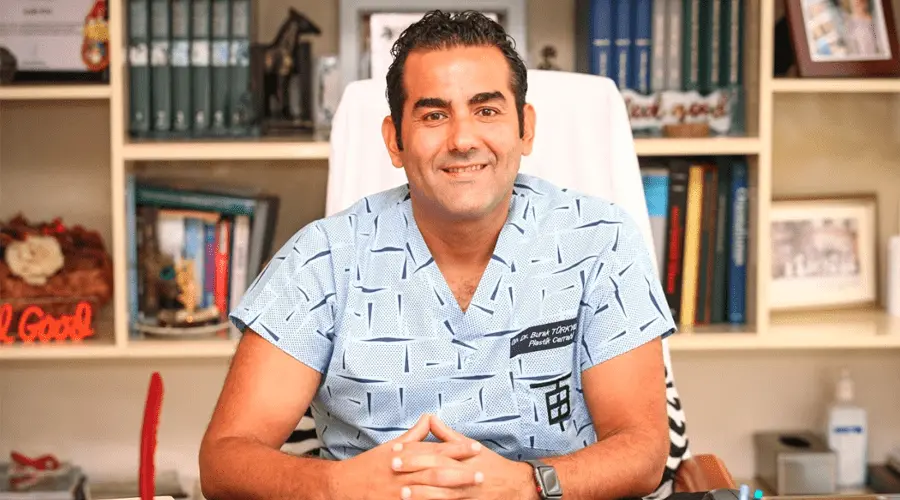Viveve Treatment
Get a QuoteBy Emel Gerdaneri • Medical review by Evrim Aksoy, MD on September 11, 2023
Get a Quote
Quick Facts
Doctors
Most Active Doctors on NewMe
Real Reviews
Most Related Review
All About Viveve Treatment
What is Viveve Treatment ?
Viveve Treatment, also known as the Viveve System, is a non-surgical procedure used for vaginal rejuvenation and tightening.
It is designed to address various concerns related to vaginal laxity, such as reduced sensitivity, decreased sexual satisfaction, urinary incontinence, and other symptoms that can arise due to childbirth, hormonal changes, or aging.
Viveve Treatment is typically performed as an outpatient procedure and does not require anesthesia. The session usually lasts around 30 to 60 minutes, and most patients can resume their normal activities immediately after the treatment.
It is important to note that individual results may vary, and multiple sessions may be recommended for optimal outcomes.
How Viveve Treatment Works?
The Viveve Treatment utilizes a medical device that combines radiofrequency (RF) energy and cryogen cooling. During the procedure, a small treatment tip is inserted into the vaginal canal, and the RF energy is delivered to the tissues.
The RF energy heats the deep layers of vaginal tissue, stimulating collagen production and causing tissue remodeling. The cryogen cooling helps protect the surface tissues from excessive heat, ensuring patient comfort and safety.
The heating and cooling process stimulates the production of new collagen fibers, which helps to tighten and rejuvenate the vaginal tissues. Increased collagen can improve vaginal tone and elasticity, leading to increased sensation during sexual intercourse and potentially reducing urinary incontinence symptoms.
What are the Pros and Cons of Viveve?
Pros:
1. Noninvasive: Viveve offers a noninvasive alternative to surgical procedures like vaginoplasty or labiaplasty. It does not require incisions, anesthesia, or a lengthy recovery period, which can be appealing to some individuals.
2. Minimal downtime: The procedure is typically quick, lasting around 30-60 minutes, and most individuals can resume their regular activities immediately afterward. This convenience may be beneficial for those with busy schedules.
3. Potential benefits: Viveve aims to improve vaginal laxity, sexual satisfaction, and overall quality of life. Some individuals have reported positive results in terms of vaginal tightness, lubrication, and sexual function.
4. Scientific backing: Viveve has undergone clinical studies to evaluate its safety and efficacy. These studies have provided some evidence supporting the effectiveness of Viveve for vaginal rejuvenation.
Cons:
1. Limited research: While there have been clinical studies on Viveve, the research is still relatively limited compared to more established treatment options. More extensive and long-term studies are needed to fully understand its effectiveness, potential risks, and durability of results.
2. Varied results: The outcomes of Viveve treatment can vary from person to person. Not all individuals may experience the same level of improvement in vaginal laxity or sexual function, and some may see minimal or no results at all.
3. Cost: Viveve treatments can be expensive, and insurance coverage may be limited. The cost can vary depending on the provider and location, making it inaccessible for some individuals.
4. Potential side effects: While Viveve is generally considered safe, there are potential side effects that should be considered. These can include temporary discomfort, mild swelling, redness, or irritation in the treated area. Serious complications are rare but can occur, such as burns or infection.
5. Temporary results: The results achieved through Viveve are not permanent. Over time, collagen production may decrease, and additional treatments may be required to maintain the desired effects.
What Happens After Viveve Treatment?
Viveve is a non-surgical treatment designed to improve women's sexual health by addressing issues such as vaginal laxity and stress urinary incontinence. It utilizes radiofrequency energy to stimulate collagen production and tighten the vaginal tissues.
After undergoing Viveve treatment, patients may experience various outcomes, although individual results can vary. Here are some potential effects that can occur:
1. Vaginal Tightening
2. Improved Urinary Incontinence
3. Increased Vaginal Lubrication
4. Enhanced Sexual Sensation
5. Minimal Downtime
Who are the Right Candidates for Viveve Treatment?
Here are some factors that may make someone a potential candidate for Viveve treatment:
1. Vaginal Laxity: Viveve treatment is primarily designed to address vaginal laxity, which is the loosening or stretching of vaginal tissues. This condition can occur due to factors such as childbirth, aging, hormonal changes, or genetics.
2. Urinary Incontinence: Viveve treatment may also be beneficial for women experiencing mild to moderate stress urinary incontinence, which is the involuntary leakage of urine during activities that put pressure on the bladder, such as coughing, sneezing, or exercising.
3. Sexual Dysfunction: Some women may experience decreased sexual satisfaction due to vaginal laxity or other related concerns. Viveve treatment aims to improve vaginal tightness and lubrication, potentially enhancing sexual function and pleasure.
4. General Health: Candidates for Viveve treatment should be in overall good health. It's essential to discuss any existing medical conditions, medications, or previous surgeries with your healthcare provider to determine if the treatment is appropriate for you.
5. Personal Expectations: It's important to have realistic expectations about the results of Viveve treatment. While it can provide noticeable improvements, individual outcomes may vary. Open communication with your healthcare provider about your expectations and concerns is crucial.
Is Viveve Treatment Permanent?
While Viveve Treatment can provide significant and long-lasting improvements, it is not considered a permanent solution. Over time, the natural aging process and other factors may affect the results achieved through Viveve Treatment.
The duration of the treatment's effects can vary from person to person, but it is generally expected to last for several months to a couple of years.
To maintain the results obtained from Viveve Treatment, some individuals may choose to undergo periodic touch-up treatments. It's essential to consult with a qualified healthcare professional who can provide personalized information and guidance based on your specific situation and desired outcomes.
Is Viveve Treatment Painful?
Most patients report minimal discomfort during the Viveve Treatment. The procedure is generally well-tolerated and is not considered to be painful.
The device used during the treatment delivers controlled radiofrequency energy, which should not cause significant discomfort.
However, individual experiences may vary, and some patients may feel mild sensations of warmth or a slight pressure during the procedure.
How Long Does It Take for Viveve to Work?
In general, most individuals may start noticing improvements in vaginal laxity and related symptoms within a few weeks to a couple of months after undergoing Viveve treatment.
However, it's important to note that optimal results are typically achieved gradually over several months as collagen production continues and the tissue remodeling process takes place.
What are the Side Effects of Viveve Treatment?
Viveve is a non-invasive radiofrequency-based treatment used for vaginal rejuvenation and addressing certain medical conditions, such as stress urinary incontinence.
While Viveve is generally considered safe, there are some potential side effects associated with the procedure.
It's important to note that individual experiences may vary, and it's always best to consult with a healthcare professional for personalized information.
Here are some potential side effects of Viveve treatment:
-
Temporary discomfort
-
Swelling and redness
-
Discharge
-
Spotting or light bleeding
-
Temporary changes in sensation
Written on 05/07/2023
-
Last Update: 11/09/2023

 Ask a Doctor
Ask a Doctor









